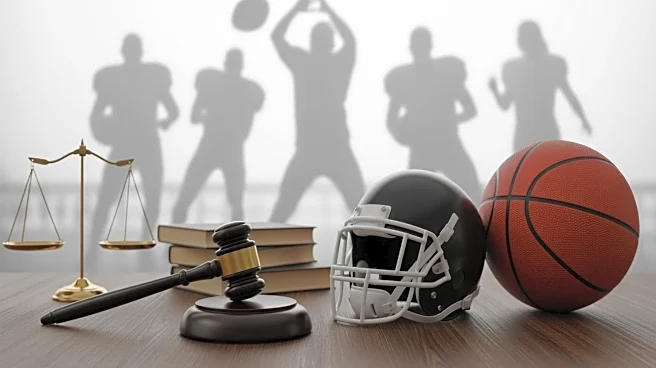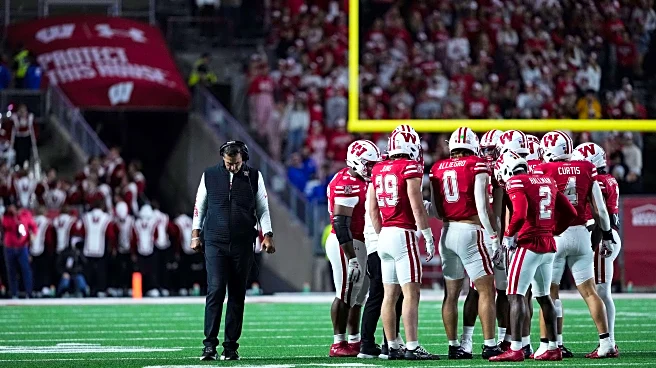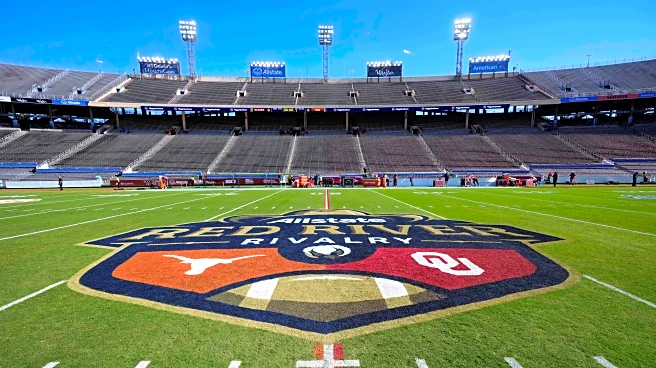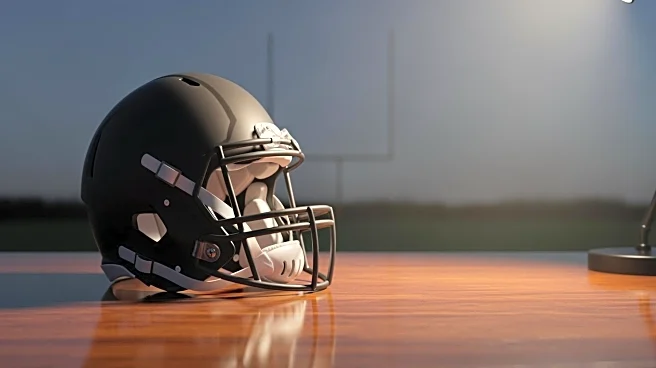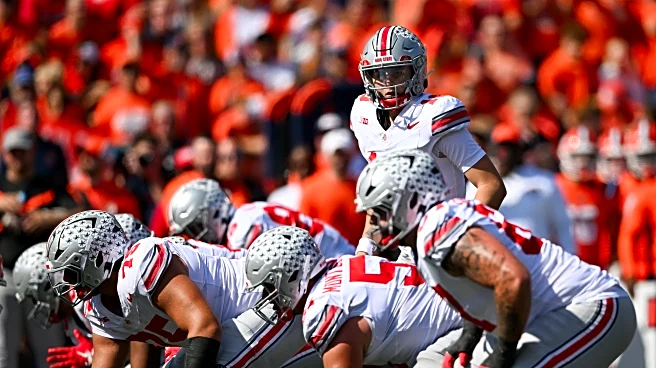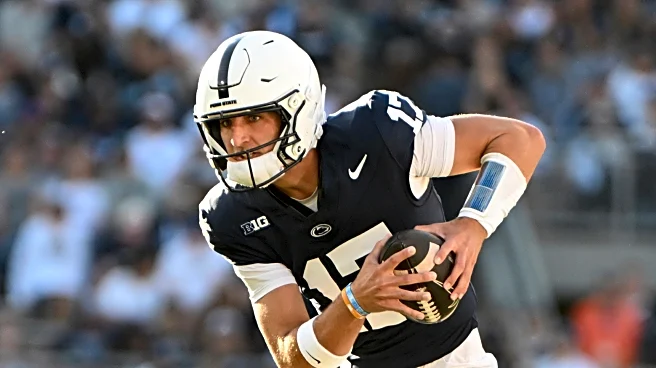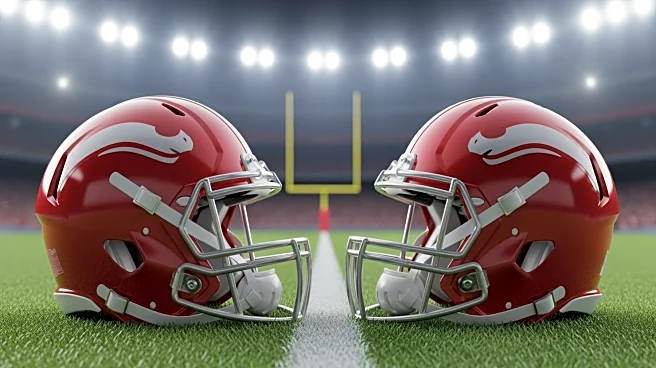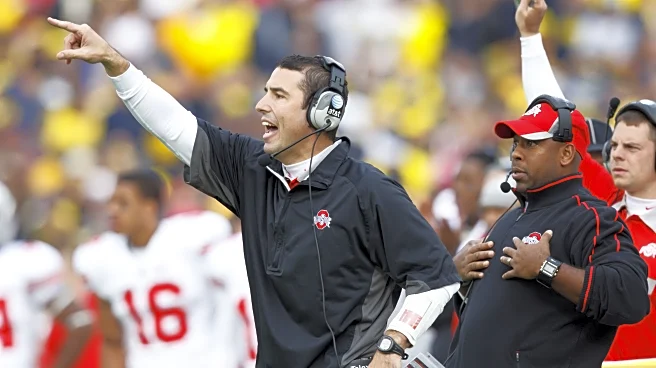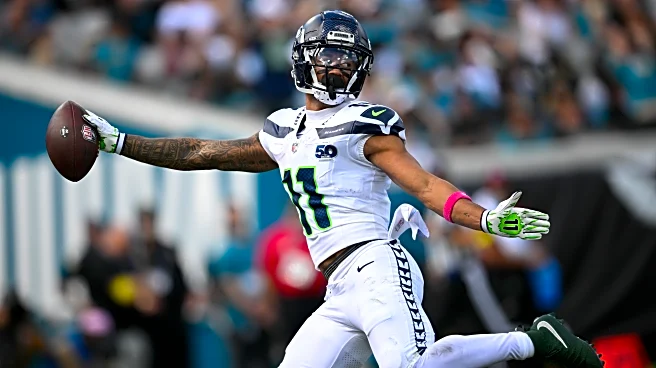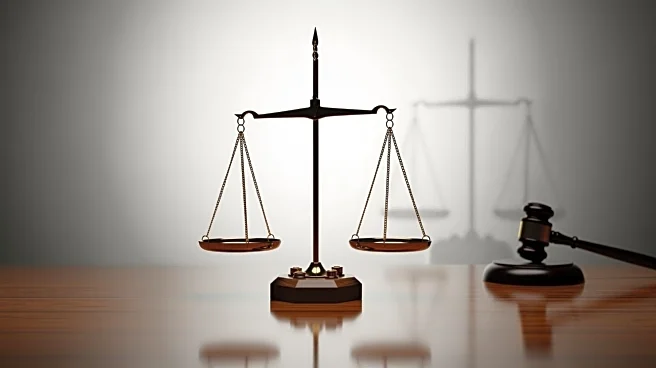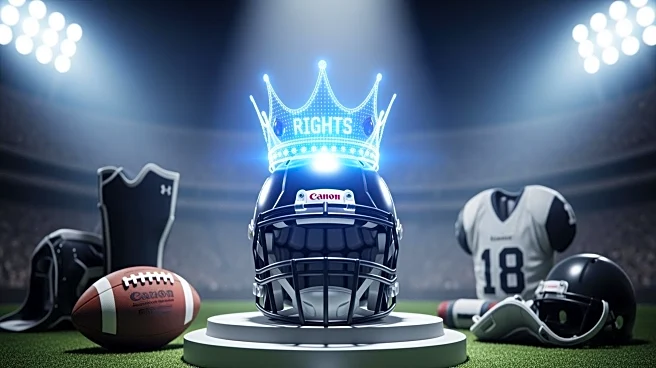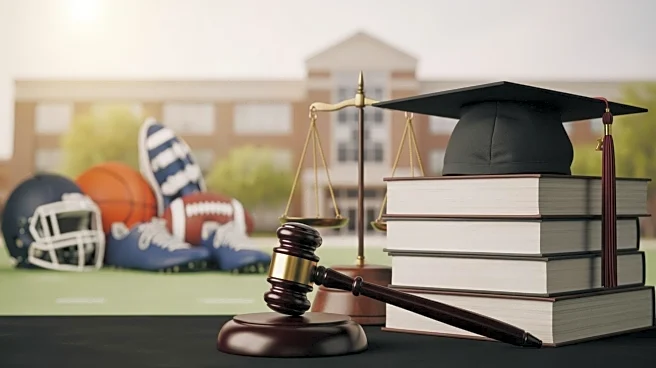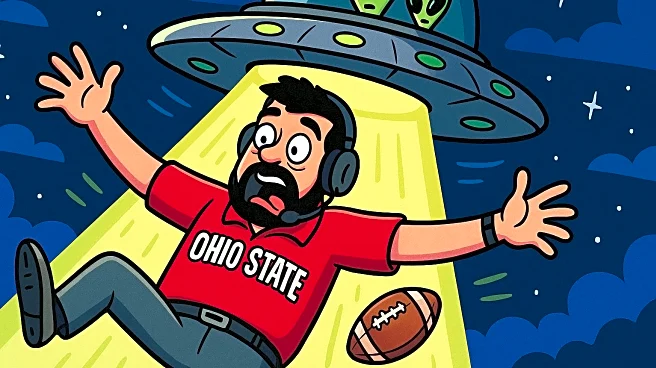What's Happening?
Jamier Brown, a top high school wide receiver in the class of 2027, has become the focal point of a lawsuit filed in Ohio state court. The lawsuit challenges the Ohio High School Athletic Association's (OHSAA) prohibition on athletes profiting from their
name, image, and likeness (NIL). Filed in Franklin County, the complaint argues that the OHSAA's rules unlawfully suppress economic liberties and freedom of expression, while restraining competition in the NIL marketplace. Brown, committed to Ohio State, has potential earning power exceeding $100,000 annually, according to the lawsuit. The legal action seeks to allow Brown and other high school athletes in Ohio to benefit from their NIL, similar to college athletes. The lawsuit highlights that Ohio is one of six states that do not permit high school athletes to profit from their NIL.
Why It's Important?
The lawsuit against the OHSAA could have significant implications for high school sports in Ohio and potentially nationwide. If successful, it may pave the way for high school athletes to capitalize on their NIL, similar to college athletes, thereby altering the landscape of high school sports. This could lead to increased opportunities for athletes to support their families financially while pursuing their education and athletic careers. The case also raises questions about fairness and the economic rights of young athletes, potentially influencing other states to reconsider their policies. The outcome could impact recruitment strategies, as athletes may choose schools based on NIL opportunities, affecting the competitive balance among high schools and colleges.
What's Next?
The OHSAA is preparing for an emergency vote by its member schools in response to the lawsuit. This vote could lead to a change in the association's NIL policy, depending on the outcome. The legal proceedings will continue in Franklin County, with potential implications for similar cases across the country. Stakeholders, including high school athletes, their families, and educational institutions, will be closely monitoring the situation. The decision could influence future legislative actions regarding NIL rights for high school athletes, potentially prompting other states to reevaluate their policies.
Beyond the Headlines
The lawsuit highlights broader ethical and legal considerations regarding the rights of young athletes to profit from their talents. It challenges traditional views on amateurism in high school sports and raises questions about the balance between educational priorities and commercial opportunities. The case could lead to a reevaluation of the role of high school sports in the broader economic and cultural landscape, potentially influencing how young athletes are perceived and supported.
